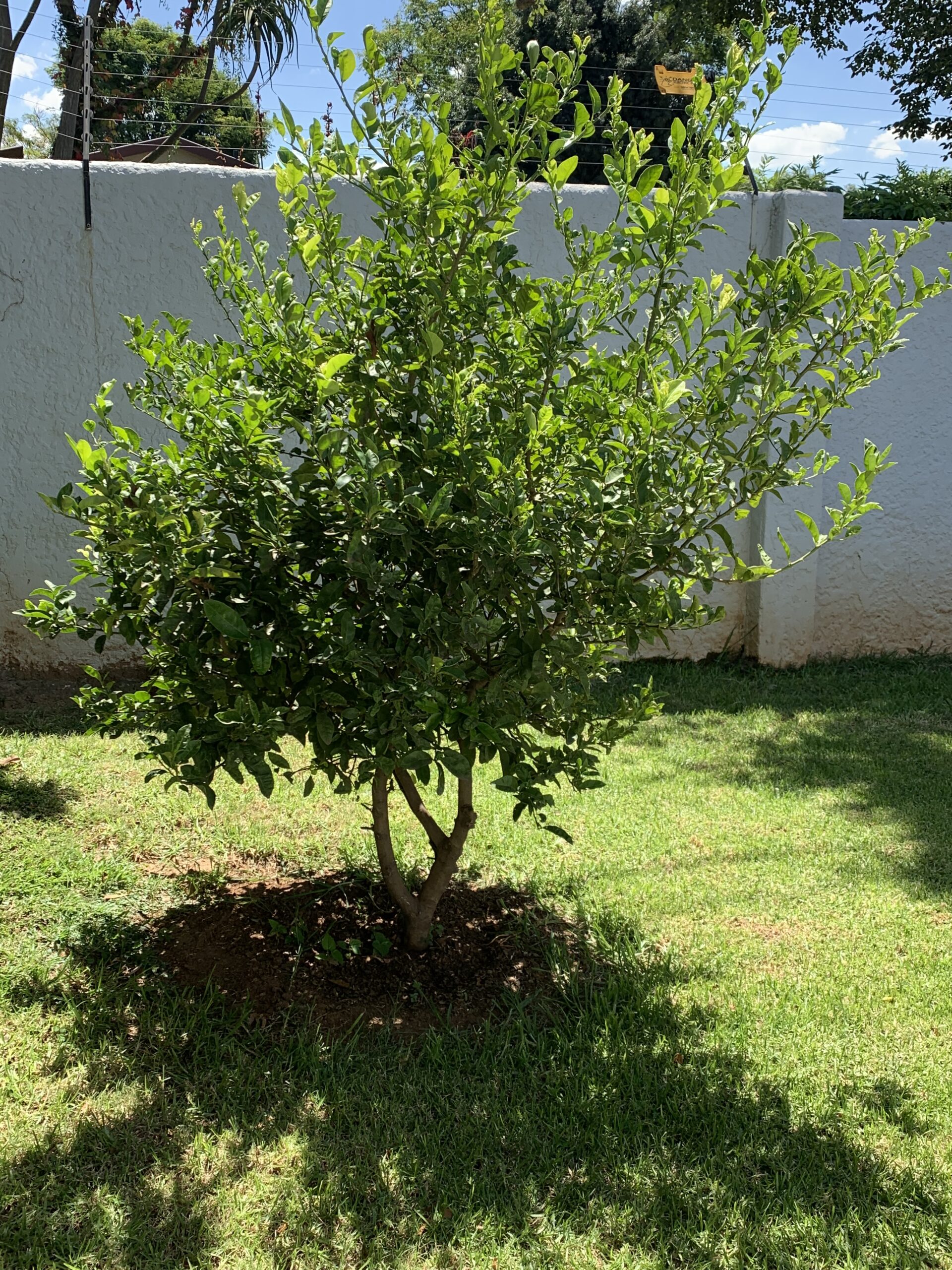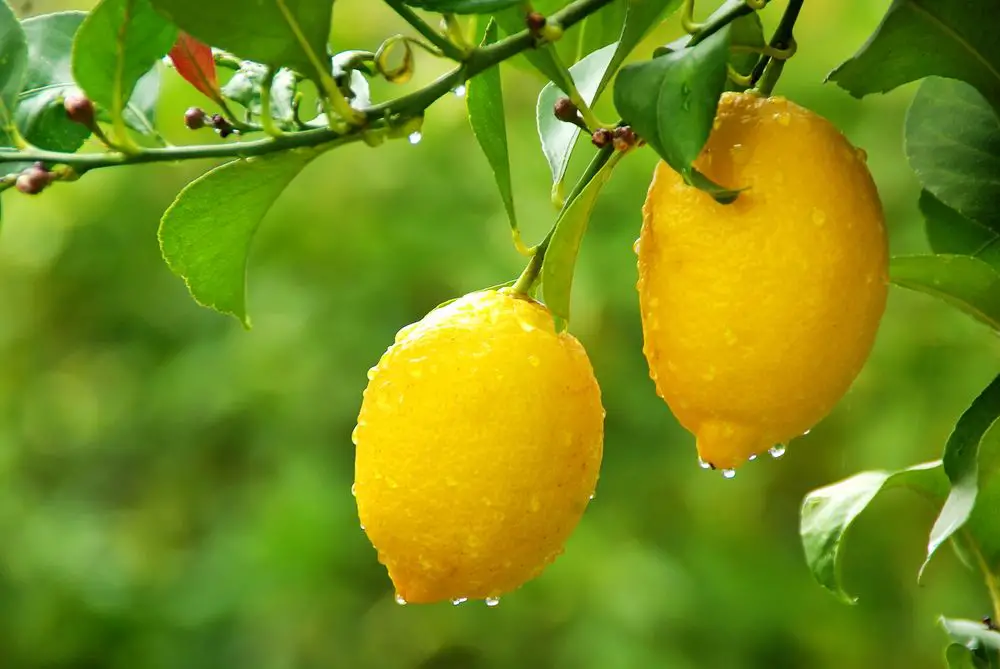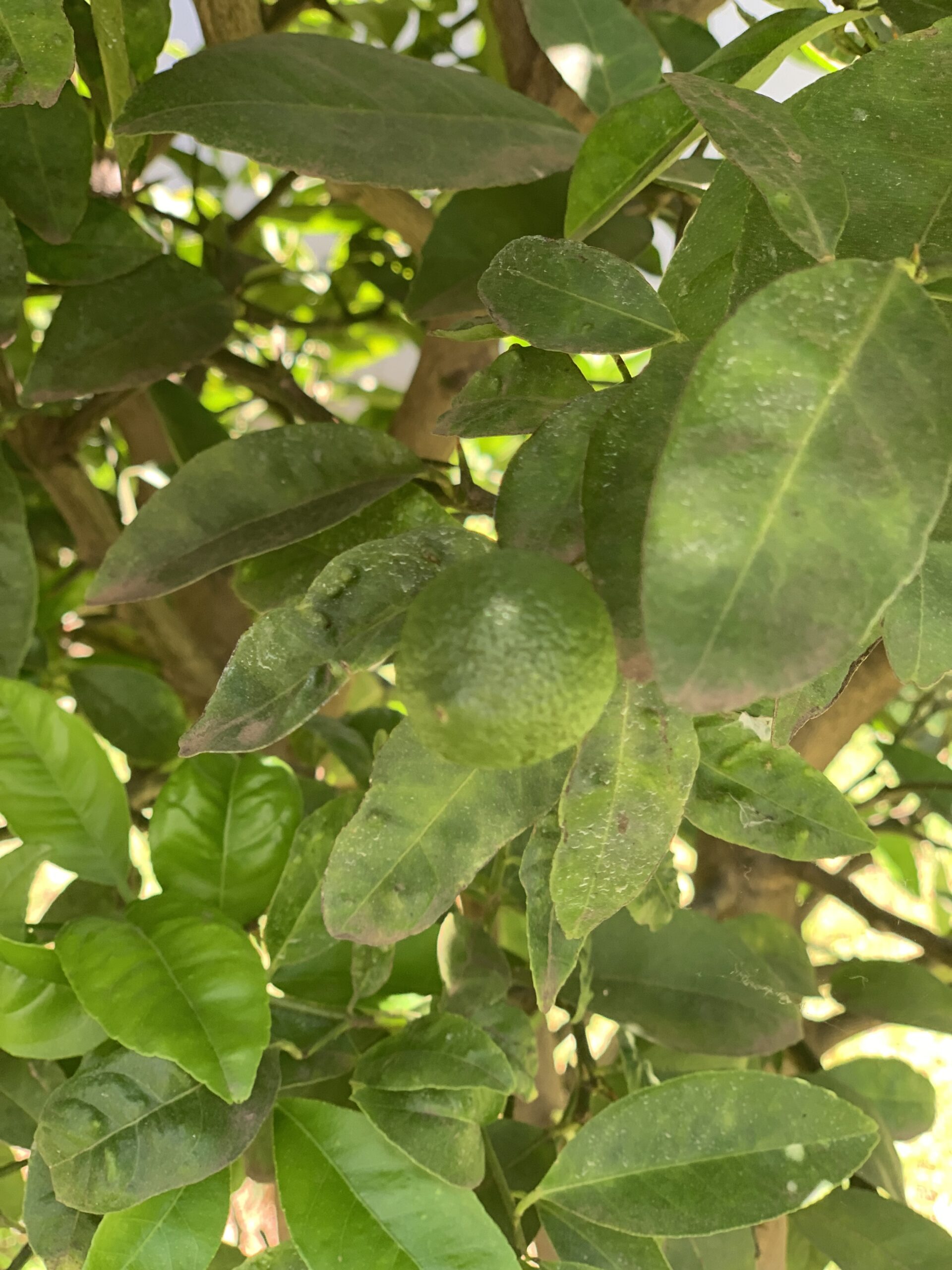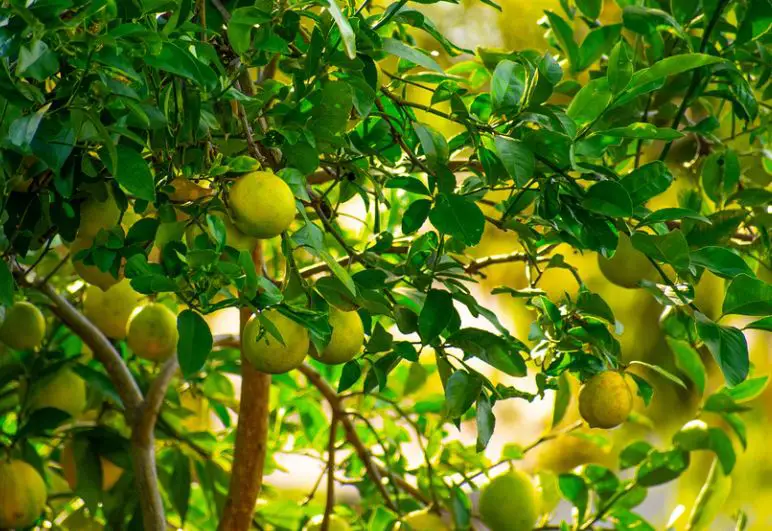Lemon trees mature faster than other citrus trees. They start bearing fruit a few years after planting and the growth stages of a lemon tree are based on its development and fruiting and that cycle is repeated every year.
7 Growth Stages of a Lemon Tree
The seven stages of growth of a Lemon Tree are: The Germination Process, Young Seedling Phase, Mature Lemon Tree, Flowering, Fruiting, Harvesting and Drying. We should also mention the prolonged patience needed between planting and flowering – don’t hold your breath – it takes several years!
Growth Stages of a Lemon Tree
It is important to know the growth stages of a lemon tree because it can take some time before producing many fruits.
The growth stages of a lemon tree are a series of processes from seeding to the time it starts producing fruits and flowers (biological age).
The growth stages of a lemon tree follow a distinct pattern, although they tend to blend or overlap because of the extended flowering period, as well as its long flowering-to-harvest time.
Stage 1: The Germination Process
The growth stages of your lemon tree start with the germination of the seeds. This is the time the seeds will grow some roots and tiny green leafy leaves.
Stage 2: Young Seedling
This is the seedling phase. Your lemon tree is still a small plant with some sprouted roots and a few leaves. The stem of your plant is still very soft. Animals and strong winds can easily break the young stems.
Animals can also destroy the young leaves. Protect the stems and leaves of your young plant.
Water your young plant regularly and more when it is too hot. It will also help if you cultivate the soil around the seedling and apply the pre-fertilizer application.
This will allow your seedling to grow well and survive when transplanted to its permanent location. The best permanent location for your lemon tree seedling is one with full sun.
Stage 3: Mature Lemon Tree
In this stage, your lemon tree is already a mature plant. It has stronger stems and more hard leafy leaves.
You will have the best lemon tree when it gets enough sunlight, water, and fertilizer. At this stage, you need to keep your lemon tree healthier for it to bear fruits.
Your lemon tree will need continuous watering and enough fertilizer so it will bear more flowers, and therefore, more fruits.

Stage 4: Flowering
During the flowering stage, the lemon tree is preparing to produce fruit.
The white flowers are not only beautiful but also fragrant, and they attract bees and other pollinators.
Pollination is crucial for the fruit to develop, as it is needed for fertilization. Therefore, it is essential to ensure the tree is placed in an area where it can attract pollinators, such as bees or butterflies.
In addition to ensuring proper pollination, you must provide your lemon tree with proper care during the flowering stage.
This includes increasing watering and fertilization. However, be careful not to overwater the tree, which can lead to root rot and other issues. Watering the tree deeply once or twice a week is recommended, depending on the climate and soil type.
Using organic fertilizer is preferred for fertilisation, as it is better for the tree and the environment. A balanced fertilizer with equal nitrogen, phosphorus, and potassium is recommended.
Apply the fertilizer every four to six weeks during the growing season. However, it’s important not to over-fertilize the tree, as this can cause damage to the roots and leaves.
Monitoring the tree for pests during the flowering stage is also essential. Pests that can attack lemon trees include scale insects, spider mites, and aphids. Worms and caterpillars may also feed on the tree’s leaves, flowers, and fruits. To prevent pest infestations, you can use natural pest control methods, such as introducing beneficial insects or using neem oil.
In conclusion, the flowering stage is an exciting time for a lemon tree owner, as it signals the beginning of the fruit production process. You can ensure a healthy and fruitful tree by providing proper care, including adequate water and organic fertilizer, and monitoring for pests.
Stage 5: Fruiting

This is the stage when your lemon tree will produce some fruits for the first time from its flowers.
The lemon fruits will be green when young. It will then become dark green and yellow when it is ripe. The lemon fruit will be oblong and will have smooth skin. Your lemon tree should be about 2-5 years old when it starts to bear fruits.
It is at this stage that your lemon tree will need more care.

Stage 6: Harvesting
Harvesting is an exciting stage for any lemon tree owner, as it is the culmination of all their efforts to grow a healthy tree.
Once the lemon fruit has matured, it is ready to be harvested.
This usually occurs in the late winter or early spring, depending on the climate and the specific variety of lemon trees.
The ripeness of the lemon fruit can be determined by its color, which will transition from green to yellowish as it matures.
It’s essential to wait until the fruit is fully ripe before harvesting, as this will ensure that it has reached its full flavor potential. In addition to color, the fruit should also feel heavy and firm to the touch, indicating that it is juicy and ready to be picked.
When harvesting, it’s important to use sharp pruning shears or a knife to cut the fruit from the tree. Pulling the fruit off by hand can damage the tree and reduce the yield for the following year.
Cut the stem about 1/4 inch above the fruit, not damaging any other fruit or branches on the tree.
After harvesting, lemon fruit can be used in various ways, including cooking, baking, and making lemonade or other beverages.
Freshly squeezed lemon juice can also be a natural remedy for various health conditions, including sore throats, indigestion, and skin conditions.
It’s important to note that not all the fruit on the tree will ripen simultaneously, so it may be necessary to harvest the fruit in stages.
This will ensure that the fruit is picked at its optimal ripeness, resulting in a more even yield.
Harvesting is a rewarding stage in the growth of a lemon tree, as it allows the owner to enjoy the fruits of their labor.
The owner can ensure a healthy tree and a bountiful yield of delicious and nutritious fruit by waiting until the fruit is fully ripe and using proper harvesting techniques.
Stage 7: Drying Stage
This is when the lemon tree fruits will turn brown and begin to dry. The lemon fruit will fall and decay. Your lemon tree will, however, continue to bear fruits sooner.
After a few years, your lemon tree will also decay. You will then need to prepare some lemon tree seeds and grow a new tree. By this time, you will have many seeds and fruits which you can use to plant your new tree.
Lemon Fruit-Producing Conditions
| Aspect | Details |
|---|---|
| Location | The lemon tree should be located away from structures and other trees that can shade the tree and lower blooming and fruiting. |
| Soil Requirement | The tree prefers well-drained soil with a pH of 5.5 to 6.5 pH. |
| Watering Requirement | Newly planted trees require watering every other day. Water the plant twice weekly when roots are establishing. Established trees only need occasional watering during dry conditions. Excess water can hinder growth. |
| Fertilizer | Lemon trees require frequent fertilizer to grow best. Apply a quarter of a pound of 6-6-6 blend every 2-3 months, and increase the amount as the tree matures. After 5 years, apply 3-4 pounds 2-3 times a year. |
| Tree Appearance | The lemon tree will mature into a round, open canopy with evergreen oval green leaves. The tree can grow up to 20 feet in height and width. The white flowers bloom from early winter to early spring and again from early summer to late autumn. |
To ensure top-quality growth of flowers and production of fruits, your lemon tree requires certain growing conditions.
Location
The tree should be grown far away from structures and other trees that can shade the tree, lowering blooming and fruiting.
Soil Requirement
The lemon tree prefers well-drained soil with a pH of 5.5 to 6.5 pH.
Watering Requirement
The newly planted tree needs to be watered every other day. Water the plant twice weekly when the roots are establishing themselves. Established trees only need occasional watering when conditions are dry during flowering or fruiting.
The tree does not also need watering during the rainy season. Truth is, too much watering can hinder the growth and development of the tree.
Avoid splashing water on the leaves, flowers, or fruits, especially during humid conditions. This may cause your tree to develop diseases.
Fertilizer
Lemon trees are heavy feeders. They must be frequently applied with fertilizer to grow the best growth and production of flowers and fruits.
Apply a quarter of a pound of fertilizer (6-6-6 blend) every 2 to 3 months. As the tree matures, increase the amount of fertilizer by a quarter of a pound every year.
As your lemon tree reaches maturity (about after 5 years), apply 3 to 4 pounds of fertilizer 2 to 3 times a year.
With the right growing conditions and care, your lemon tree will grow healthy and quickly achieve a mature height of up to 20 feet and a spread similar to the height of the tree.
Your lemon tree will mature into a round, open canopy. The tree will be covered in evergreen oval green leaves. The leaves have a reddish tint when still young. As the foliage matures, it turns into deep green.
You can smell the sweet citrus scent of the flowers of your lemon tree even before you realize the tree is in bloom.
Your lemon tree will have single blooms or small clusters of little white flowers with about 4 to 5 petals with purple undersides.
The flowers of your lemon tree will bloom from early winter until early spring. The blooms will appear again in early summer through late autumn.
How to Plant Lemon Seeds
Your lemon tree starts from a seed. The seed is small, oblong with pointed tips on one side and round on the other side. The seed has a smooth texture and is white to yellow green.
Young lemon seeds do not germinate very well, only mature seeds do. So, you must choose a fully matured seed to ensure the best germination.
A single lemon fruit contains about 7 to 15 seeds. Choose the high-quality seeds to plant to ensure the fruit will ripen.
You can distinguish the mature seeds from the young ones because they will turn green and will ripen to produce top-quality seeds.
What you need to Plant Lemon Seeds:
- Organic Lemon
- Fertile Potting Soil
- Compost (natural fertilizer)
- Seedling Pot (24 inches wide X 12 inches deep)
- Planting Pot (6 inches wide X 6 inches deep)
What you need to do to Plant Lemon Seeds:
1. Moisten your potting soil to keep it damp, but not soaked.
2. Fill your small pot with soil 1 inch below the rim.
3. Remove the seed from your lemon.
4. Plant the seed about ½ inch deep in the middle of the pot.
5. Spray the soil with water (directly above where you planted the seed).
6. Seal the pot with a plastic cover.
7. Poke some holes in the plastic cover.
8. Place the pot in a warm and sunny place.
Water your plant occasionally and moderately. Transfer your plant to the bigger pot when it outgrows, the smaller one.
A lemon tree (Citrus limon) grows in USDA hardiness zones 9 -11. Such a tree can be a beautiful feature in your garden; its citrus scent can enhance the whole surroundings.
Even better is the lemon tree fruit you can use in your cocktails and cooking.
Final Thoughts on the Growth Stages of a Lemon Tree
A lemon tree’s growth takes 3 to 6 years from seedling to maturity. It will start bearing fruits when it is at least five years old.
However, a small lemon tree only takes a few months to grow. It will look beautiful in a pot anywhere in your home.
Can you imagine that and a wonderful citrus scent wafting through your home on the breeze…? Tempting!
Patricia Godwin, our editor, brings a wealth of experience to this topic. She has taken several landscaping and gardening courses and owned a successful landscaping and gardening service for many years, allowing her ample opportunity to test various techniques and products for growing vegetables, trees, and other plants. She has a particular fondness for Lemon Trees and frequently uses lemons in her recipes.
Read More:
21 Lemon Leaf Benefits, Plus 9 Culinary Applications!
How to Fertilize Lemon Trees: A Full Guide
How to Properly Grow and Care for the Meyer Lemon Tree
The following sources were consulted during the research for this article:
ScienceDirect
Researchgate

